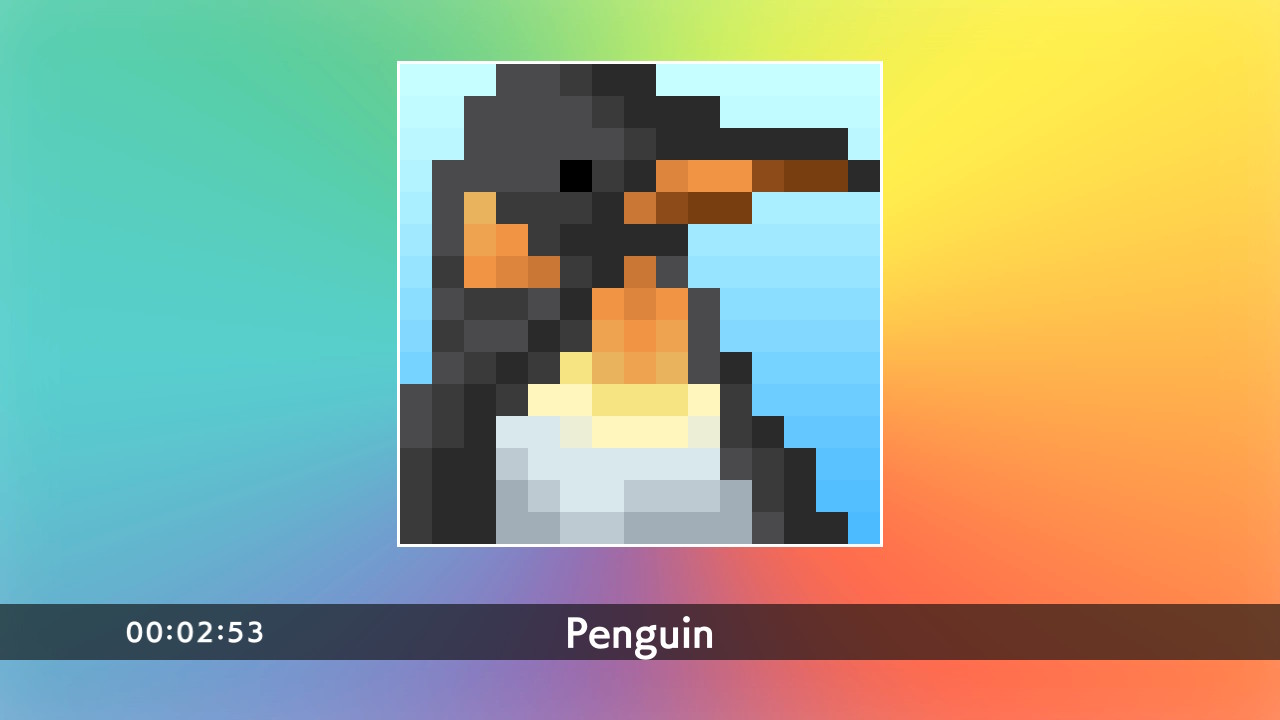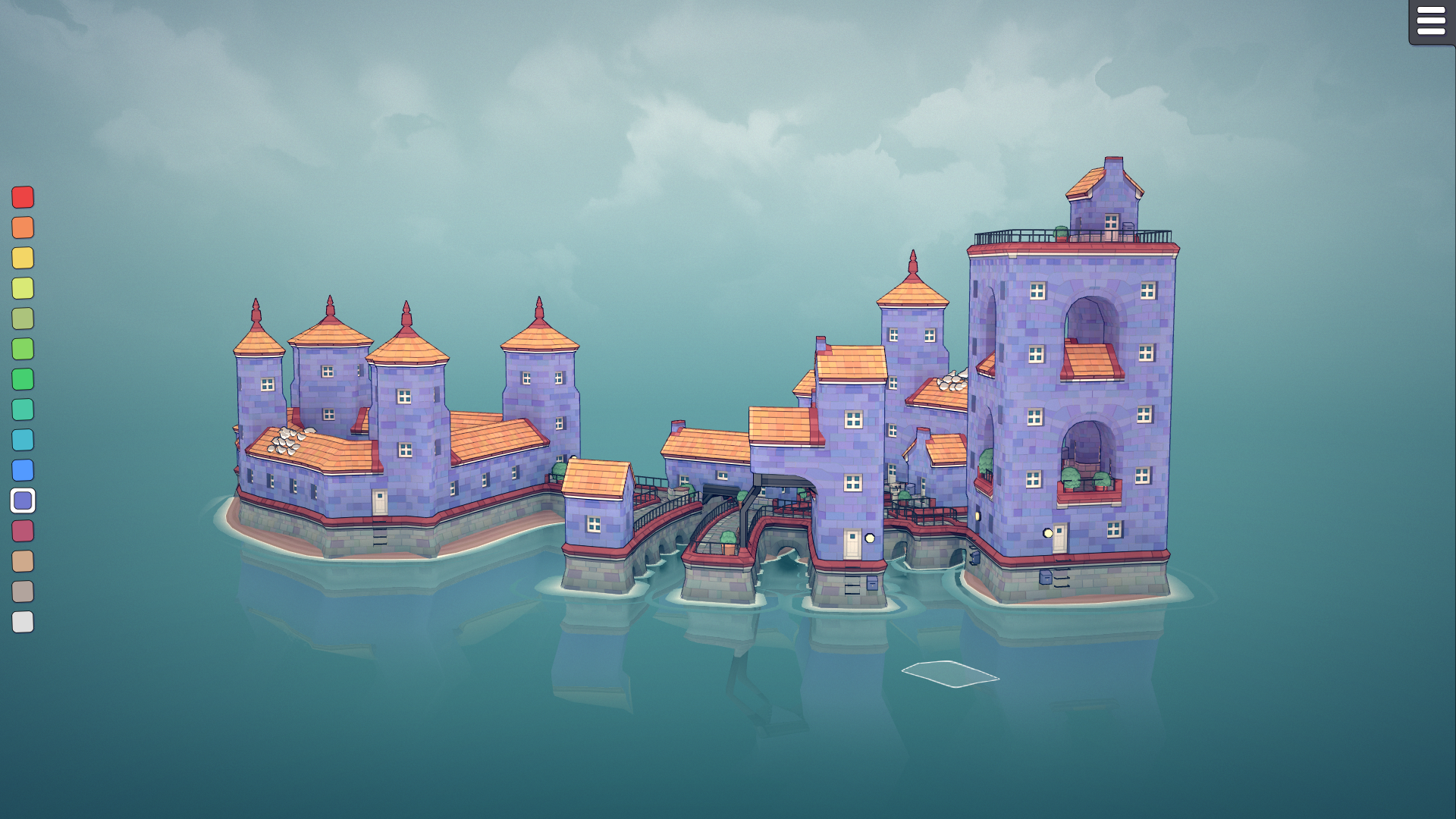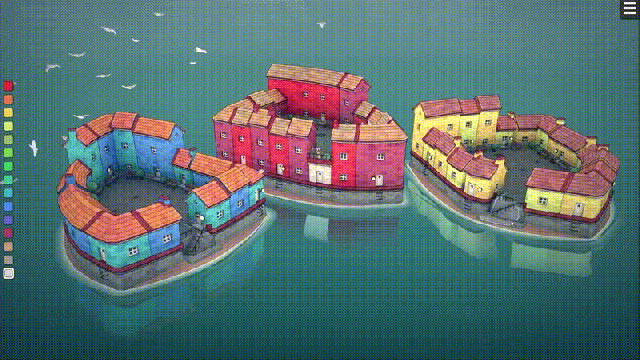I’ve had a lot of fun with The Last of Us Part II, especially its more gruesome gameplay elements. As awful as it feels to admit, Naughty Dog made virtual murder fun. There’s a great sense of accomplishment in sneaking up on a pair of enemies, grabbing one, headshotting the other, and executing your captive in a few simple button presses. But what if games as a whole could deliver the same visceral thrill for building something up as for tearing it down?
The brutality of The Last of Us Part II (not to mention thousands of other games) never bothered me while I played. I focused more on the beautiful moments, like Ellie and Dina’s burgeoning relationship, or exploring an abandoned synagogue.
But as I completed more and more of the main characters’ intertwining journeys, I couldn’t ignore my growing exhaustion. I was a wreck after every play session. At the time this felt like a reaction to the tragic narrative, but now I also recognise it as a sort of low-level trauma from ripping out human throats for hours.
Playing violent video games can be satisfying in the same sick way as stomping a large insect. It’s generally unnecessary — you could just as easily carry the bug outside to live a new life in your backyard — but there’s a sort of primal fulfillment in the crunch and the gore that The Last of Us Part II mimics perfectly. This dog is an obstacle, they say. Stab it in the neck. Why find a way around a wall, games ask, when you can blow it up instead? You’re presented with nails and, instead of a hammer, given a series of slightly different chainsaws with which to solve the situation.

During quarantine I’ve been working my way through the Picross S games on Switch. I sit up late at night, lights off, listening to the latest episode of Rude Tales of Magic or a Lucy Dacus album while turning empty grids into pixelated artwork. I recently took a screenshot when one of the puzzles ended up being a simplified picture of a penguin.
Picross S asks extraordinarily little of you. It teaches you the ropes to solving basic puzzles and then sets you free to tackle them at your own pace. You can turn hints on and off. If stumped, you can ask the game which squares you’ve marked incorrectly to get you back on track. A timer accompanies each puzzle, but serves little purpose. I like to try and figure out what the final picture is going to be as I’m filling out the grid. Sometimes it’s easy, sometimes I have to wait for the black-and-white squares to transform into colour. My favourite mode, Clip Picross, tasks you with filling out several picross that combine to make much larger pictures, which are even harder to deduce.
It’s all very satisfying in a way that doesn’t necessitate destruction but doesn’t require much creativity, either. The rules leave very little room for experimentation, providing a gradual difficulty curve that always ends up in the same place.
The Picross S games are still very much games, their gentle goals still very much goals. Townscaper, which I bought on a whim for six bucks this morning, is more like an experimental tool. You’re presented with a barren plot of water upon which to architect a lone building, small village, or bustling metropolis. They can be as bright and flashy as you want or focus entirely on one colour. I chose purple.

The game never shows you the people who live in these abstract towns, but I wonder what they think of the city I’ve built for them. It’s a mess of arches and waterways that tries to mimic Venice but looks more like a child’s absentminded and abandoned LEGO project. There’s no right or wrong way to build your town, and the game focuses entirely on building something from nothing. Each action is accompanied by soft and gratifying “plip plop” sound effects.
Townscaper manages to be engaging without asking you to open someone’s throat with a cheap pocket knife. It may not be as viscerally stimulating as smashing a bug beneath your heel, but it still feels productive and worthwhile, like using tupperware to relocate a spider to your porch.
It’s not that I want games like The Last of Us Part II to go away. I don’t expect a potential sequel to add a negotiation mechanic that allows you to charisma your way through a battlefield. It would just be great if games paid more attention to making the act of building something up just as fun as the most popular murder simulators make snuffing something out of existence. Often, it feels better to create than destroy. I wish there were more games that got that.

Leave a Reply